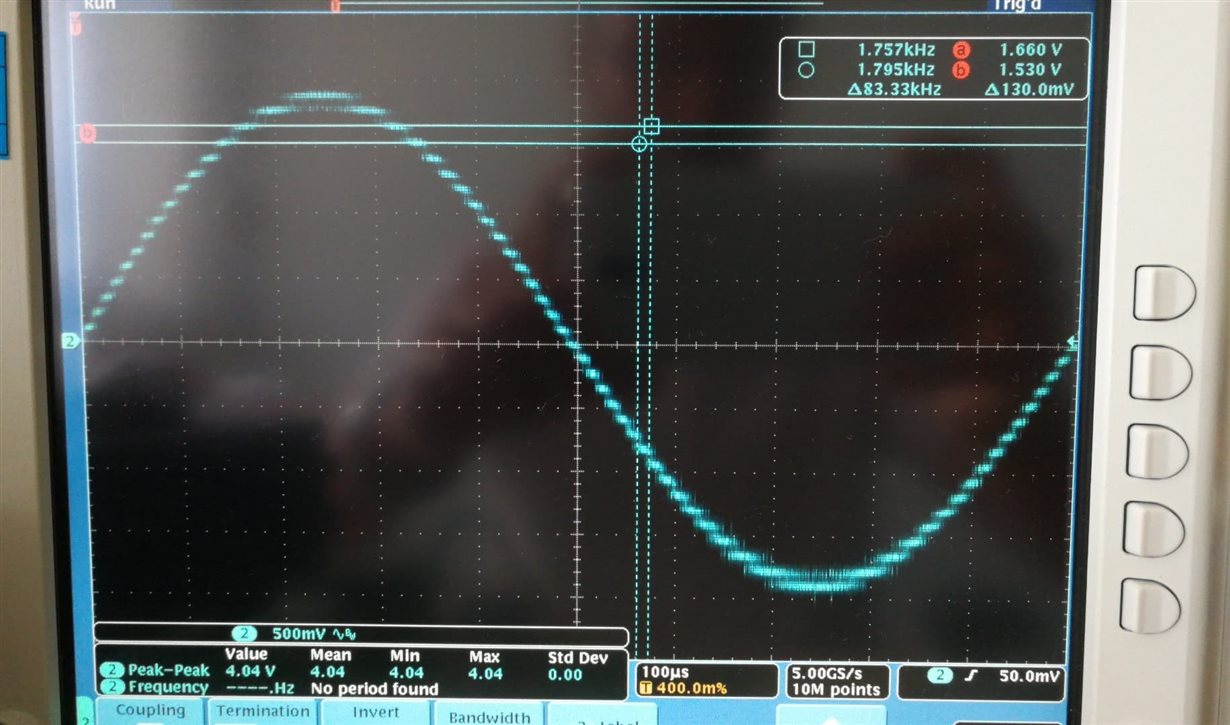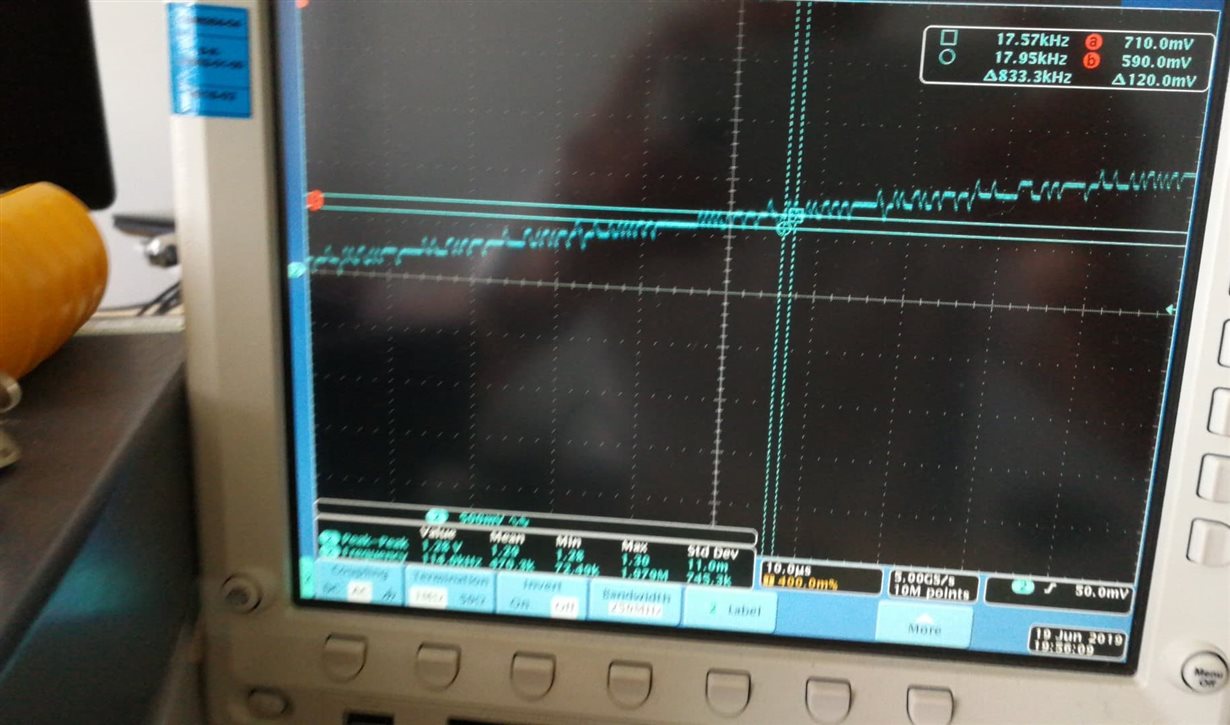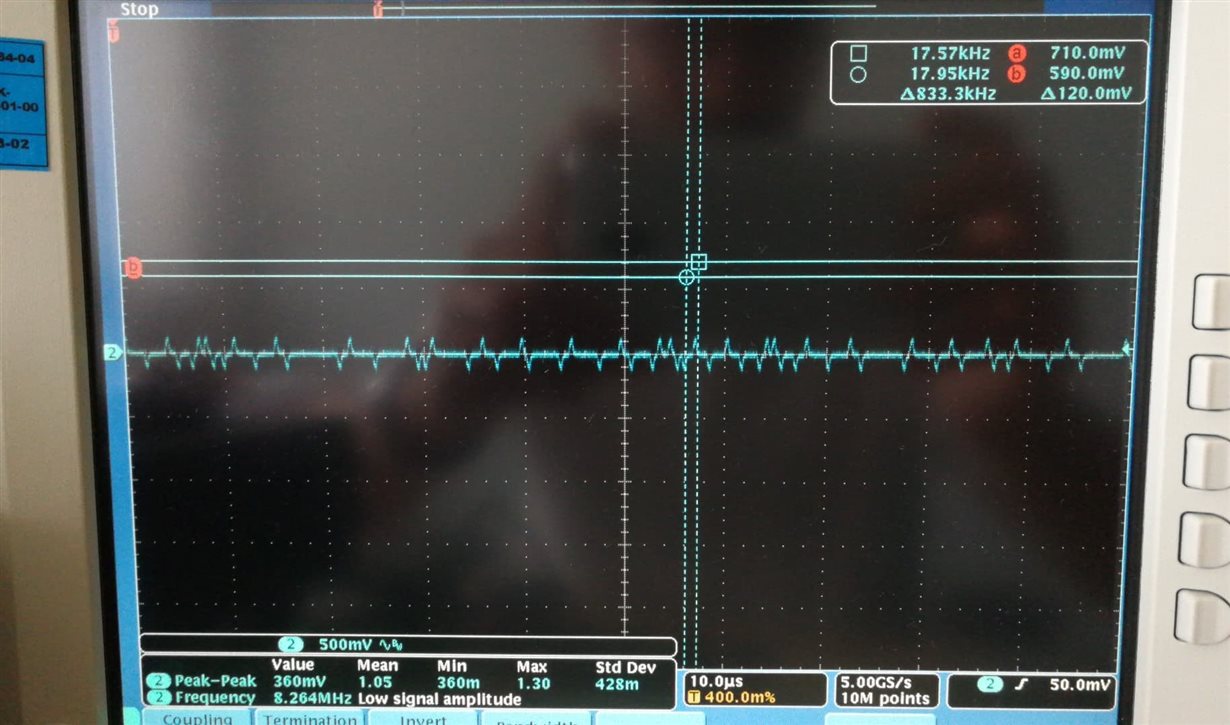Hi All,
I am trying to run the DAC in the application like attached. The very strange thing is that it seems to be 5 bits only, please see attached screenshots from the scope. For the purpose of this demo I played 1 kHz 0dB sine wave.
Schematic:
1 kHz sine wave
1 kHz sine wave zoomed in
No playback
You can easily count the number of bits by looking at those pictures. Each of the LSBs corresponds to approx. 120 mV (after the I/V). How is that possible? What am I missing here?
Thanks very much for your support.




